Are you planning a nice trip to Apulia? Today we want to accompany you discovering one of the most beautiful regions in the world by visiting Cisternino, among the beautiful villages of the charming Itria Valley, a territory characterized by a wonderful natural landscape and above all by the iconic trulli, the very famous stone houses with cone-shaped roofs.
Let’s find out together what to see and what to do in Cisternino, a perfect destination for a green holiday dedicated to sustainability, excellent Apulian food and outdoor activities, including landscape photography, hiking and cycle tourism.
(Original cover picture from Wikimedia Commons; Author: Antonio Marangi)

Where is Cisternino and how to get there
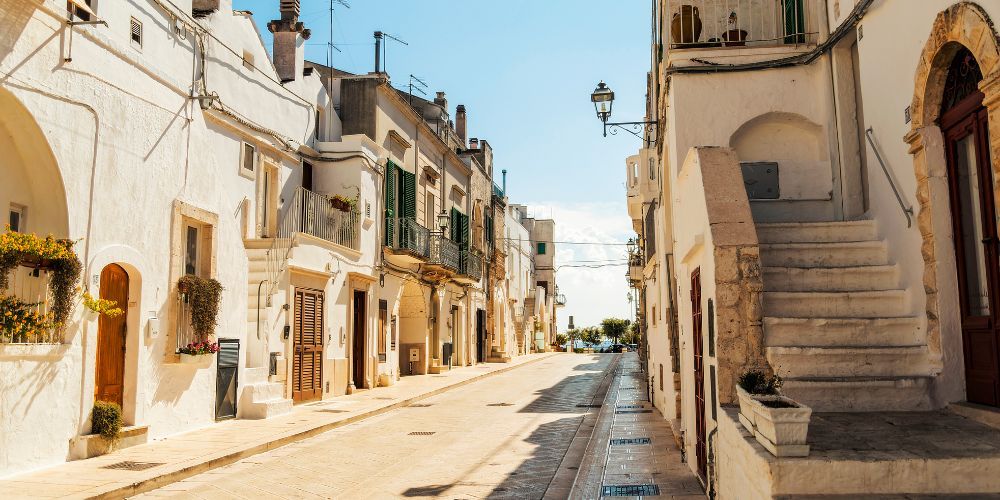
Before finding out what to see and what to do in Cisternino, let's see together where it is and above all how to get there.
Cisternino is a village in the province of Brindisi, originally part of the Land of Bari, and occupies a central geographical position on the border between three provinces of Apulia, in the territory of the Trulli Valley. Cisternino is an important crossroads for visiting the other beautiful villages of the Itria Valley, such as Alberobello, Ceglie Messapica, Locorotondo, Martina Franca and especially Ostuni.
To get to Cisternino from Brindisi, you can use the car by driving on the SS16 to Ostuni and then following the directions for the remaining journey on provincial roads up to your destination; alternatively, you can also travel by bus or train.
To get to Cisternino from Bari, the most convenient means of transport is the car, driving on the SS16 to Fasano, then continuing on internal provincial roads up to your destination; also in this case it is possible to move using the bus or train, taking care to check the necessary changes of route (mainly at Fasano).
To get to Cisternino from Taranto, traveling by car you can easily reach Martina Franca on the SS172, then continuing on the provincial roads up to your destination; alternatively, you can easily get there by bus.
The two main reference airports are the Salento airport in Brindisi and the Karol Wojtyła airport in Bari-Palese. Likewise for ports, the two main landing places are Brindisi and Bari.
What to see in Cisternino: a walk through the historic village
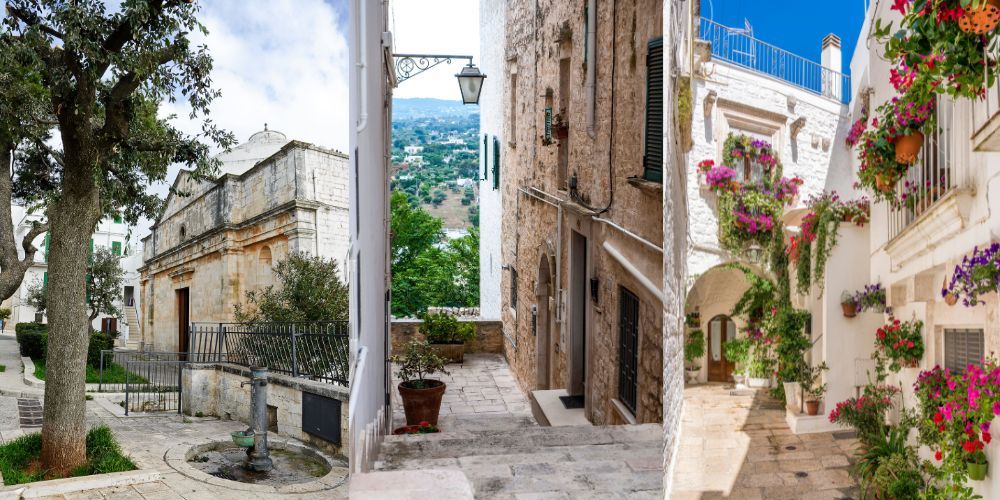
Having finally reached your destination, it's time to find out what to see in Cisternino. This enchanting village in the Itria Valley boasts a historic center steeped in charm and Apulian authenticity and it’s characterized by its paved streets, white houses with flowered stairways and balconies and many picturesque views to photograph after every corner.
The streets of the historic center of Cisternino are perfect for a walk enriched by the colours, scents and flavors (as we will see later!) of this fantastic land. We suggest you visit Piazza Vittorio Emanuele II in the heart of the historic center, perhaps enjoying a coffee or an ice cream in one of the many bars and admire the Clock Tower, one of the symbols of Cisternino.
Wandering through the alleys of Cisternino, among arches, small squares and shops, pay attention to the beautiful swings and murals scattered throughout the historic center, fantastic tourist attractions that transform the village into a fairytale place.
The most evocative and photogenic is certainly the beautiful Mary Poppins swing, one of the most Instagrammable locations in Cisternino which reminds, with a smile and a caress, the importance of never forgetting the beauty of childhood!
Cisternino: a panoramic view over the Itria Valley
At the gates of the historic center of Cisternino we suggest you to visit Piazza Garibaldi, one of the cornerstones of the village. The square is characterized by the presence of two iconic historic buildings of Cisternino: the Church of S. Nicholas, the main one in the town, and the Norman Tower or Porta Grande, a 17 meter high bastion with a small statue of the Saint of the People on its top. Of particular interest is also the monument dedicated to the fallen soldiers of the wars.
Piazza Garibaldi also represents a fantastic panoramic point over the Itria Valley, a belvedere which from the almost 400 meters above sea level of Cisternino allows tourists to enjoy a spectacular view of the surrounding landscape, seeing in the distance the villages nearby, the magical trulli scattered here and there in the countryside and vast olive groves.
The Sanctuary of Madonna d’Ibernia
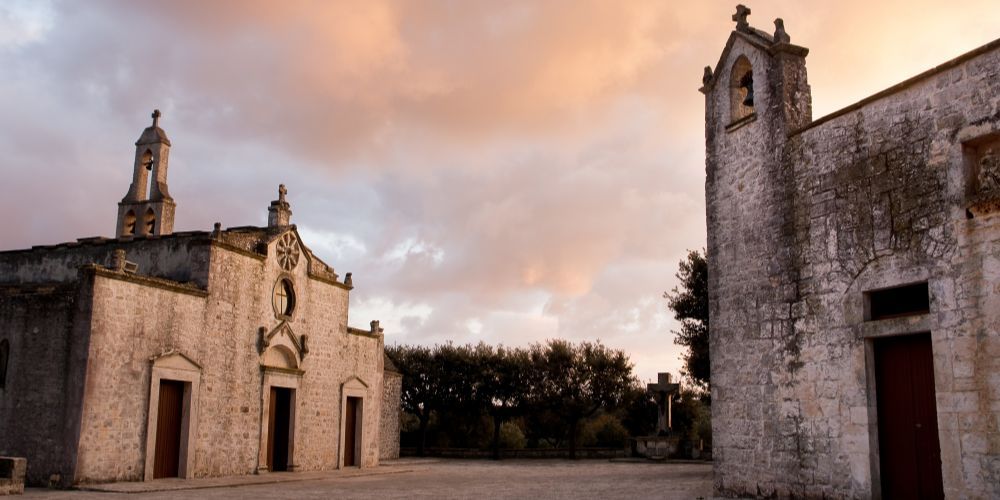
Let's now move just around 1km outside Cisternino to admire the Sanctuary of Madonna d'Ibernia, a beautiful religious building immersed in the scenery of the suggestive countryside of the territory among the trulli and olive trees.
This sanctuary is a true gem of devotion set in the serene atmosphere of the Itria Valley, as well as a place capable of transmitting a healthy dose of positive energy. In fact, it seems that the cult of the Madonna d’Ibernia is associated with the figure of the goddess Cybele, representing abundance, fertility and the creative force of nature; and it is no coincidence that in the area around the sanctuary were found the remains of what could be an ancient settlement from the Roman or post-Roman era, with ceramics, tombs and even a Byzantine capital.
Its magic mainly concerns its origin: probably built between 1100 and 1200, according to legend it was the Virgin herself who appeared to the locals and indicated the exact location of the sanctuary. Between myth and reality, beyond any religious faith, today this place is certainly one of the most evocative destinations to see in Cisternino.
Speaking of sacred places with a mysterious charm...if during your trip to Apulia you intend to see Bari, we suggest you visit the crypt of St. Nicholas. Acknowledged internationally as the true Santa Claus, the Saint of the People also has a special relationship with Cisternino, the city of which he is the honorary patron as a testimony to the ancient belonging of the village to the Land of Bari. For further information, click the button below!
Guided tour of the Basilica and Crypt of St. Nicholas in BariWhat to see in Cisternino: the magic of Christmas in Itria Valley
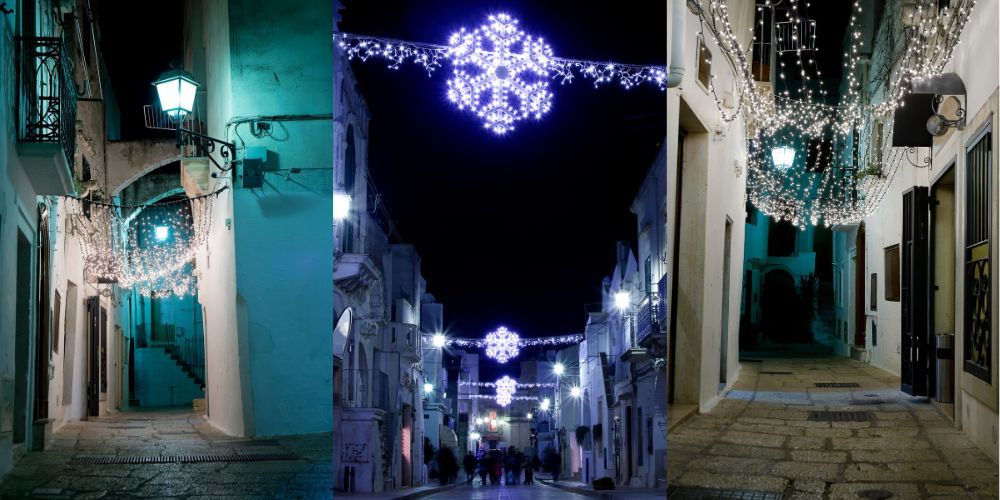
We just talked about Santa Claus...of course, because Cisternino at Christmas is an even more magical and special destination, beautiful to visit while walking in the evening through the alleys of the historic center illuminated by Christmas decorations!
As a tradition of the Itria Valley, the Christmas holidays are the perfect time to visit this wonderful region and immerse yourself in a setting of absolute beauty, discovering traditions and above all unique flavours.
Beyond Cisternino, that's one of the most popular Christmas villages on social media, to be pampered by the sight of lights and decorations we recommend you take a trip to nearby Locorotondo and Martina Franca.
If you are planning a trip to Apulia for your Christmas holidays, the Itria Valley is absolutely the perfect destination for you!
What to do in Cisternino: an enchanting landscape between woods and trulli
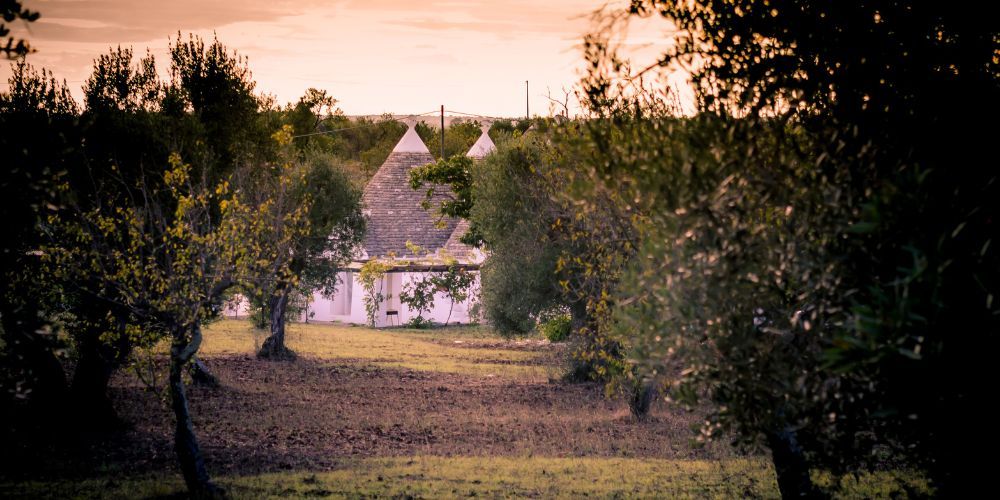
A trip to Apulia through the wonderful Itria Valley and its villages is already synonymous with fantastic places to visit and discover, strictly with eyes in awe, with the camera ready to save all the best memories. But this is just the beginning: if you are wondering what to do in Cisternino and its surroundings after visiting the village, know that this land has much more to offer.
In particular, Cisternino is one of the best green destinations in Apulia to experience a full immersion discovering its enchanting landscape between woods and trulli. Local tourism, in fact, has always been focused on the indissoluble and almost divine relationship that binds this village to the land and its green panorama, made up of hundreds of hectares of woods; some also have paths that allow visitors to venture into nature hiking routes.
Furthermore, within the Itria Valley area you can find out the best Apulian farm stays for a truly authentic tourist experience in the enchanting heel of Italy.
What to do in Cisternino: the suggestive Water Cycle Path
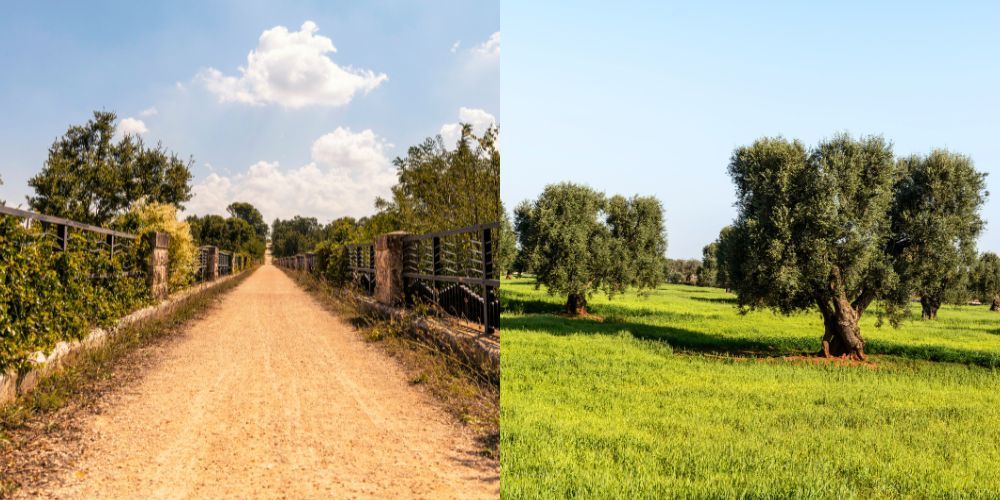
One of the most beautiful green attractions in Cisternino concerns cycle tourism, a form of tourism that in recent years has been growing a lot throughout Italy and especially in Apulia, as in the case of the Ofanto Park in the North of the region. In particular, here in Cisternino there is the Water Cycle Path.
Also known as the Apulian Aqueduct Cycle Path, it is one of the most important and evocative cycling routes in all of Southern Italy. As a part of a long cycling itinerary of around 500km that connects the province of Avellino to Santa Maria di Leuca, the Water Cycle Path is 11km long and crosses through Itria Valley and its villages.
The strengths of the Water Cycle Path in Cisternino are practicality and landscape. In fact, the track has a soft and regular pavement, with protections and rest areas, which make the experience absolutely enjoyable even for beginners with classic standard bicycles. All of this, of course, enriched by the possibility of riding your bike in complete tranquility through a panorama of rare beauty among olive groves, vineyards, trulli and country villas.
Fun fact: what is the orecchiette’s name in Cisternino?

The time has come to talk about food, and here in Apulia we don't joke about this topic! This region is in fact known for its traditional cuisine, made up of products and recipes that are enormously successful all over the world. It's impossible not to mention orecchiette, the iconic pasta shape of the region.
But be careful...what is the orecchiette’s name in Cisternino? Well, here in the Itria Valley this type of pasta is generally known as priest's ears, and they have very specific characteristics: they are larger, have deeper 'veining' and are typically prepared with ragù. This differentiates them from the more typical version of orecchiette with turnip greens, a symbolic dish of Apulia in particular in Bari and its province.
But leaving pasta aside, today we are in Valle d'Itria, and therefore... how can we not talk about the famous Cisternino’s bombette, a gastronomic delight of the renowned Apulian culinary tradition.
Cisternino’s bombette are morsels of meat, usually beef or pork, filled with local cheeses, Mediterranean flavors and other spices. Typically cooked on the grill or even on stone, the Apulian bombette offer an irresistible combination of intense and succulent flavours, a symbol of Apulian authenticity for a unique gastronomic experience, making every bite a sensorial journey through the tradition and culinary passion of this land.
To conclude the gastronomic tour in Cisternino, we suggest you visiting the local bakeries, where you will certainly be able to taste many other Apulian delicacies such as taralli, friselle and tomato focaccia.
What to see near Cisternino: discovering the trulli
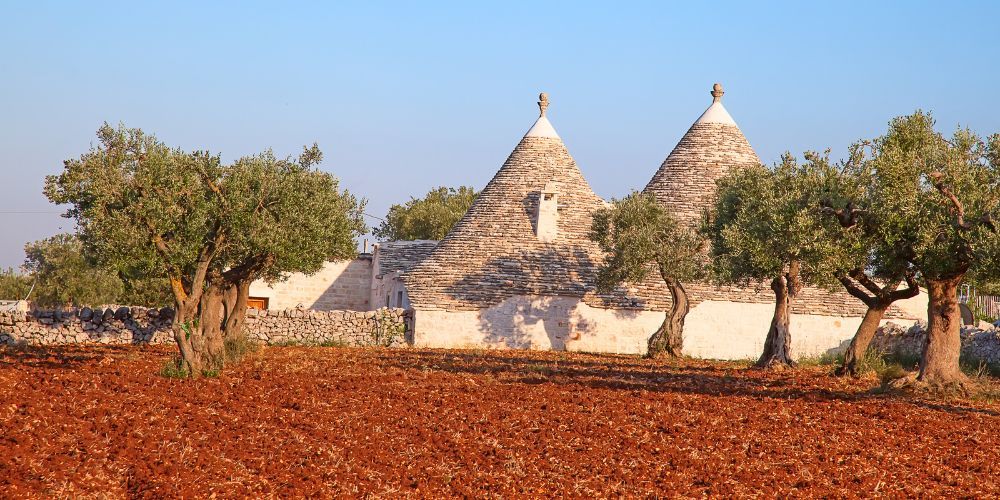
What to see near Cisternino? To best end your trip to Apulia through the Itria Valley you absolutely must visit the wonderful Alberobello, the undisputed homeland of the trulli, and enjoy a tour among the iconic stone houses and the magic of their symbolism.
You can easily reach Alberobello by car in less than half an hour starting from Cisternino, first following the SP134 to Locorotondo and then the SS172 to your destination. A particularly interesting and perfect alternative for the sportiest tourists is the bicycle: following the same route that passes through Locorotondo along the Ciclovia, on two wheels it is possible to reach the town of trulli by riding for about an hour.
Once arrived at your destination, let yourself be enchanted by one of the most instagrammable Italian locations. Have fun!
Find out the magic of trulli in AlberobelloWhat to see near Cisternino: discovering Alta Murgia
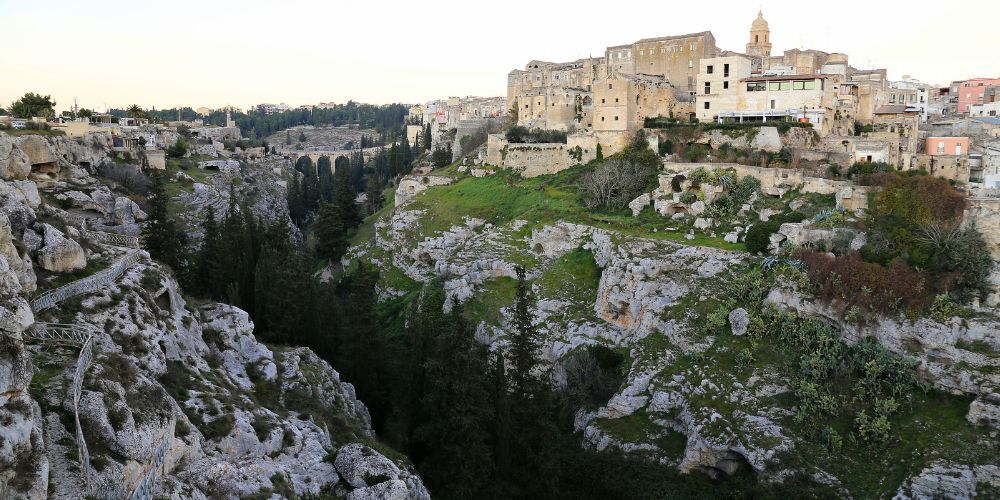
If you want to explore Apulia even further to discover the most authentic spirit of the Murge region, then we recommend you continue your journey through other characteristic towns and villages of the territory.
Continuing from Alberobello after the visit to the trulli, moving by car it is possible to easily cross the entire region towards West. Onthe way you can visit places like Putignano, famous for its Carnival, or Altamura, home of the famous bread.
The final destination of this journey is Gravina in Puglia, a charming village framed in a breathtaking and almost 'wild' natural landscape, a typical panorama of the Murge. Purchase here your special tourist card to access the best attractions in the village and immerse yourself in the beauty of this land. Have a good trip!
Find out more about Murge in Gravina in PugliaAbout the author
Written on 15/12/2023

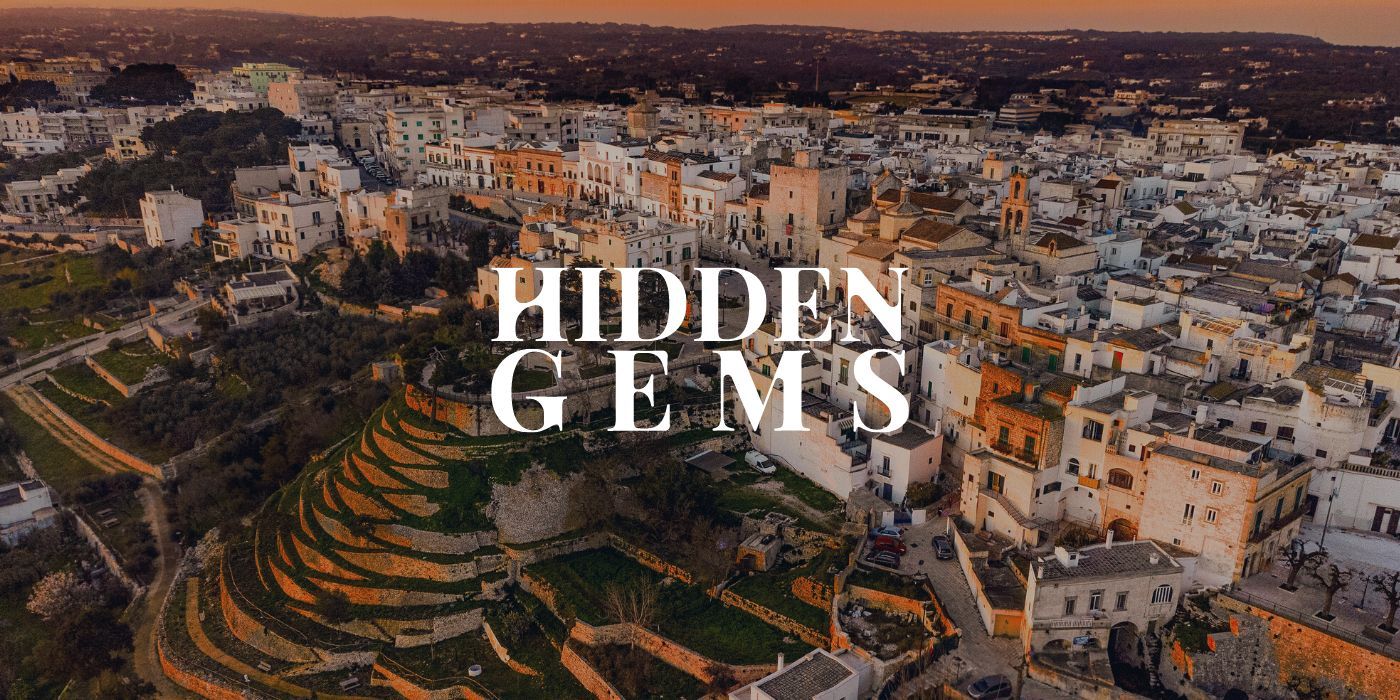
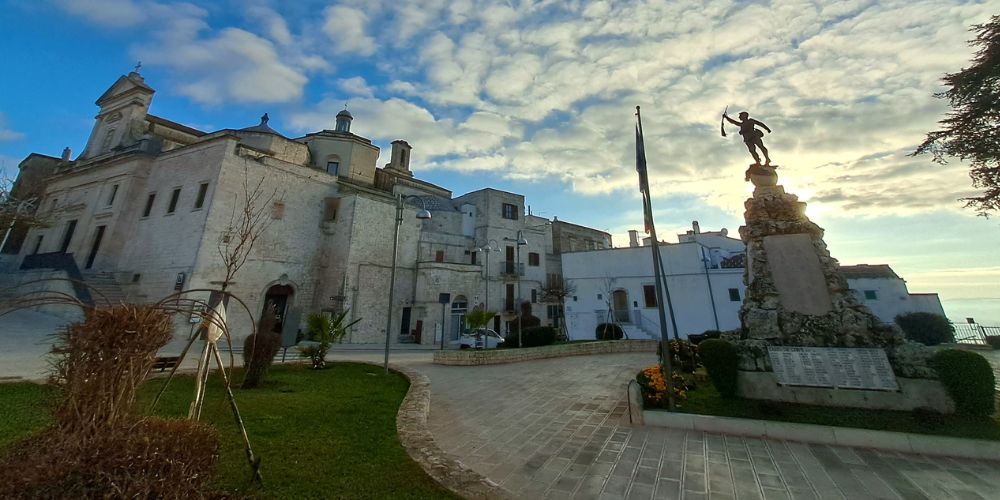

Massimiliano Antonio Primi
Find out what to see and what to do in Cisternino, an amazing village in the Itria Valley perfect for cycle tourism and hiking through the trulli.